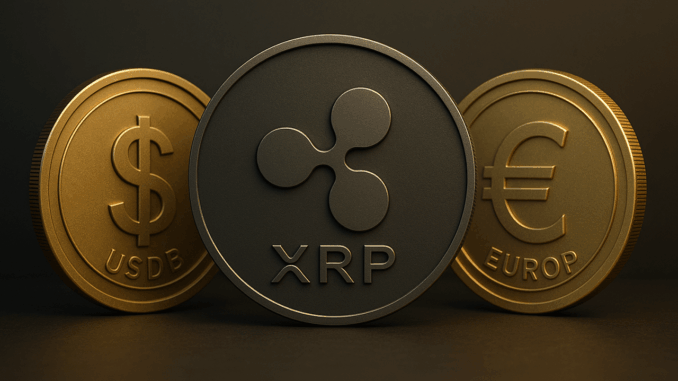
Ripple Network: XRPL Welcomes New Stablecoins – Euro Also Represented
In a press release, Ripple drew attention to new stablecoins that are now available through the XRPL protocol. The Euro is also represented, and the new partners have set themselves ambitious goals.
Ripple regularly markets its XRPL as energy-efficient and scalable — opportunities that once again attract companies that want to issue stablecoins. A current press release from Ripple documents the addition of five projects, along with the fact that XRP Ledger (XRPL) has recorded over 17 million transactions in ten years and reliably processes millions of transactions daily.
Stablecoins on XRPL
The fact that stablecoins have emerged as a popular gateway to blockchain-based financial services is demonstrated by the fact that all major providers have recently announced projects in this sector. The term stablecoin is used for cryptocurrencies that are linked to the value of traditional currencies such as the Euro. The largest stablecoin (USDT) measures its value by the US Dollar and has a capitalization of 82 billion US Dollars.
In the refreshed overview from Ripple, the Euro stablecoin STASIS stands out. The project already had its EURS available on the Ethereum blockchain, now an implementation for XRPL follows. According to its own statements, EURS is the largest Euro stablecoin, at least when measured against a capitalization of 140 million US Dollars. With XRPL, EURS will also be available for the XRP cosmos. Ripple also emphasizes new stablecoins tied to the Hong Kong Dollar (or HK Dollar for short) and the Singapore Dollar (SGD) on XRPL through the alliances with First Digital and StraitsX announced in Vancouver, Canada. Ventures from Africa and Latin America are also testing stablecoins on XRPL.
Ripple ODL/XRPL together with stablecoins
For investors, the growing diversity of stablecoins native to XRPL means securely designed opportunities for cross-border transactions or on-ramps to other product ecosystems. Ripple CEO Brad Garlinghouse recently revealed in an interview that Ripple, together with its payment solution On-Demand Liquidity (ODL), handles more than half of the annual trading volume on XRPL. Garlinghouse referred to experiments with international banks that want to use stablecoins specifically for immediate currency transactions.
Ripple doesn’t consider the US dollar to be a market guaranteed solely to USDT and stablecoins such as USDC controlled by Circle. The company announced its own stablecoin tied to the US dollar, with its subsidiary Tetragon taking the operational lead.
Overall, Ripple considers itself well-positioned to have XRPL with its almost constant zero transaction fees emerge as a first-class infrastructure for stablecoins. Unfortunately, Ripple’s future appears to be significantly hampered by incomplete regulatory policies emanating from the USA. Ripple, in its latest press release, once again appealed for clear regulatory frameworks at the outset.
Leave a Reply